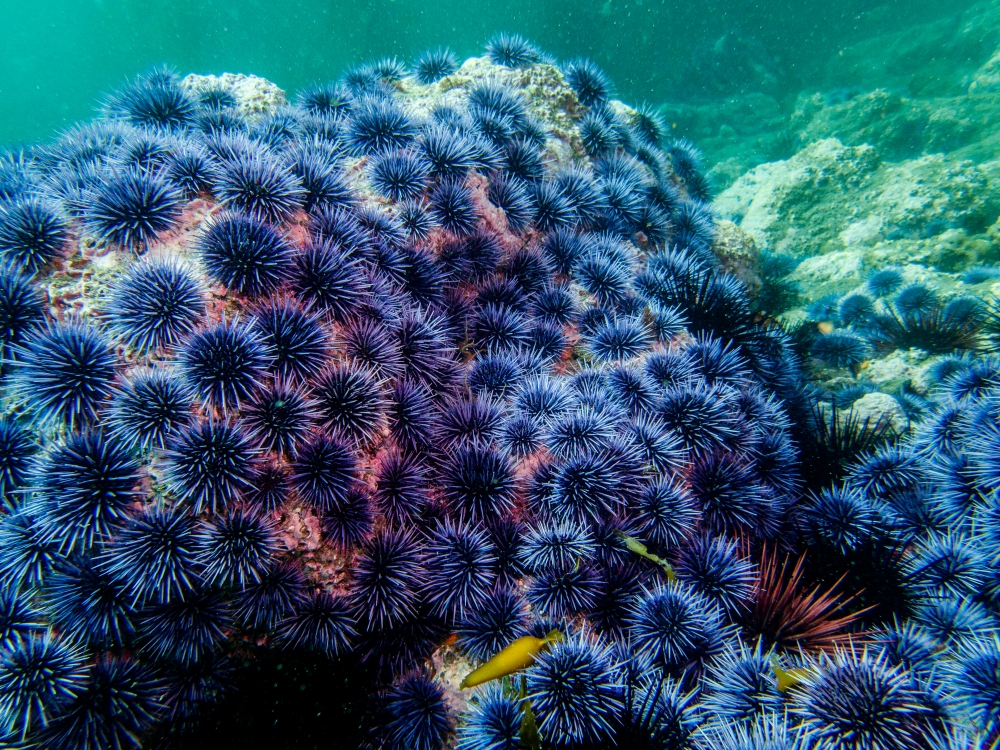Helping kelp


In 2014, kelp, an iconic feature of coastal California, started dying—and kept dying. Per a UC Santa Cruz-led study published in 2021, the once lush forests of this bulb-topped, giant algae off the California coast had, by 2019, receded by more than 95%. Taking their place? A barren sea floor crawling with spiny sea urchins.
Historical records indicate that kelp abundance cycles with environmental conditions, typically declining as coastal waters warm. But the latest die-off appears poised for persistence. An atypically dogged warm water mass lasting from 2014 to 2016 (nicknamed “The Blob”) likely initiated the kelp decline. But then, a strong El Niño followed. The unusually extended warming exacerbated disease-related die-offs of the sea stars that eat urchins. Not surprisingly, the numbers of purple sea urchins—the voracious primary predators of kelp—exploded. How long this possibly climate change-related ecological upset will last is unclear. “I think the kelp will return,” said Professor Peter Raimondi, who co-leads the coastal ecosystem-focused Raimondi-Carr Lab with Professor Mark Carr. “The more important question is will such die-offs become more common.”
In a step towards potentially helping kelp to recover, Raimondi’s genetics-based research has identified kelp subpopulations adapted to thrive at different water temperatures. If coastal policy called for human intervention, Raimondi said, “You could theoretically restore kelp populations from a “seed bank” with stock adapted to current or expected temperature ranges.”
—Bethany Augliere

